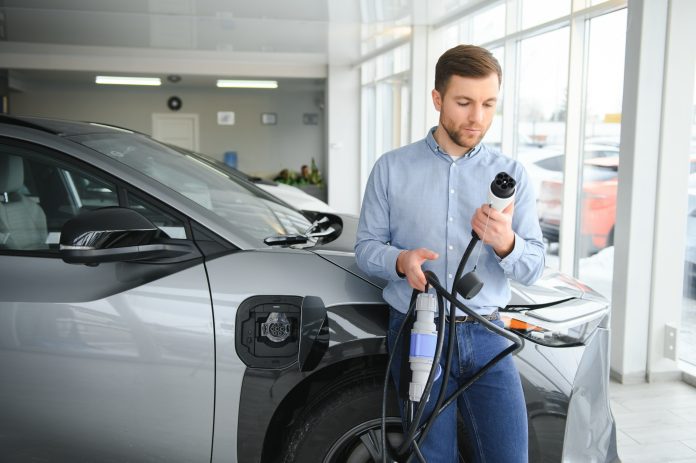If you noticed, some troubling but unsurprising news for the electric vehicle market e emerged from Europe on Tuesday. First, Porsche Taycan prices collapsed, which won’t surprise any US Porsche or incentive-laden Audi EV dealers. But it gets a bit worse.
Sliding EV demand has also forced European auto battery manufacturer ACC, co-owned by Stellantis, Mercedes, and TotalEnergies, “to pause development of a site in Germany’s Kaiserslautern.” Should the US automotive dealers be concerned about these and other events in motion? Well, yes.
No More Rainbows and Butterflies in EV Sales
Now, what does that mean for your customers? Jalopnik recently reported that the Taycan you sold your favorite customer four years ago has now lost $100,000 in value. A report by QZ.com showed a Porsche Certified 2020 Turbo S at Porsche Grapevine with 21,635 miles and a current asking price of $105,900; it had an original MSRP of $206,950. That’s a depreciation drop of $101,050.
Tesla recently reported an 8.5% drop in year-over-year vehicle sales in the first quarter. Sales growth across the EV space has slowed, and Tesla is locked in a price war with manufacturers worldwide.
After Tesla released their earnings in April, Deepwater Asset Management analyst Gene Munster wrote on X, “The excitement around EVs has cooled, which further dampens sales.”
A combination of higher interest rates, lack of robust positive real wage growth, and consumer slowdown amid stagflationary threats is weighing on demand for vehicles, especially EVs. And let’s remember, the taxpayer-paid incentives are drying up.
What’s the Game Plan When EV Sales Plummet?
With EV values plummeting faster than a lead balloon in Europe and signs pointing to a plateau in sales stateside, it’s time to face the music and ask ourselves: What’s our game plan?
Diversify Your Inventory: EVs may be taking a hit, but that doesn’t mean we should abandon ship entirely. Instead, let’s take a balanced approach and diversify our inventory—especially in the pre-owned area. If you’re tied closely to an OEM, keep a mix of EVs, traditional gas-powered vehicles, and perhaps even some hybrids as much as your allocation allows so you can cater to a wide range of customer preferences.
Educate Your Team: Knowledge is power, folks. Ensure your sales team is up to speed on the latest developments in the EV market. Equip them with the knowledge and tools they need to address customer concerns and effectively sell both traditional and electric vehicles.
Focus on Value: In times of uncertainty, value reigns supreme. Highlight the value proposition of your vehicles, whether they’re electric or traditional. Showcase their features, performance, and, most importantly, how they meet your customers’ needs.
Invest in Marketing: Marketing is always the first thing to go when sales drop. However, now’s not the time to avoid marketing efforts. In fact, it’s more important than ever to get the word out about your dealership and the vehicles you offer. Leverage digital marketing channels, social media platforms, and targeted advertising to reach potential customers and drive foot traffic to your showroom.
Stay Agile: When the market is in chaos, it’s important to improvise, adapt, and overcome sales difficulties. Keep a close eye on market trends and be prepared to adjust your strategies accordingly. Whether tweaking your inventory mix or shifting your marketing focus, stay nimble and responsive to regional market dynamics, empowering you to stay in control of the situation.
Explore Alternative Revenue Streams: While vehicle sales may be experiencing a downturn, there are plenty of other revenue streams to explore. Consider expanding your service offerings, selling aftermarket accessories, or even offering vehicle subscriptions to diversify your revenue streams and weather the storm.
By taking a proactive approach and implementing these strategies, we can confidently navigate the electric storm ahead. Remember, challenges often present opportunities for growth and innovation. Dealerships can rise to the occasion and chart a course for success.
As the automotive industry grapples with declining EV values in Europe, US dealerships face critical decisions regarding their inventory mix and market strategies. Recent data suggests that EV sales in the US have plateaued, signaling a potential shift in consumer sentiment.
With the market reaching saturation and recent reports indicating that even if EVs were priced equivalently to ICE (internal combustion engine) vehicles, a significant portion of consumers would still opt for traditional cars, dealerships must carefully assess their approach to electric vehicle sales.
By staying abreast of global trends and adapting their strategies to align with evolving consumer preferences, dealerships can stay prepared and maintain their competitive edge in the market.



